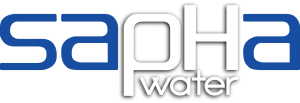History
The ancient Greeks used to ionize their water by swirling the water in circular movements in urns built of copper and brass. In the 1930s, Dr. Henri Coanda, a renowned Rumanian scientist and Nobel Prize winner, known primarily for his study of fluid dynamics and its application to aeronautics, reportedly traveled to remote villages in the Himalayas (the Hunzas), and in parts of China, to investigate the longevity of people in those areas. He looked closely at the properties of the glacial alkaline water ingested by the villagers, and wondered if it was possible to re-create this water's structure artificially. The issue remained unsolved until the 1940s, when Japanese researchers experimented with the process of electrolysis (which was invented by the Russians in the 1920's), separating water into alkaline and acidic components through the use of a membrane.
As far as the history of alkaline water ionization goes, all roads lead to Hunza of the Himalayas and to the Andes Mountains, the Shin-Chan areas of China and the Caucasus in Azerbaijan. These are remote places, but places where longevity is the rule, not the exception.
Alkaline ionic water is made by using a water ionizer to split electrically filtered tap water into alkaline ionic water and acid water, each of which then feeds into a separate chamber. One chamber contains the alkaline water that has been found to be so enriching to human health and wellness. The second chamber contains the acidic water, which has remarkable uses as well.
The first alkaline ionic water ionizers were available in Japan in l958. At first, only very large units were used in hospitals. In l960, a group of Japanese medical doctors and agricultural research scientists formed a special medical and agricultural research institute to investigate ionized water. Annual meetings were held to report their findings. Finally, in January 1966, the Health and Rehabilitation Ministry of the Japanese Government acknowledged the alkaline ionic water ionizer as a legitimate medical device for improving human health.
These Japanese-made ionizers were first introduced to Korea in the 70's, and today are also approved as medical devices by the government of South Korea. In 1985, the Korean-made household unit was introduced in the United States. A successful toxicity test was conducted by an independent testing laboratory in LA utilizing FDA standards the next year. The results proved that there was no toxicity in the Alkaline-Ionized water generated by the water ionizer.
Many believe that Alkaline Ionized Water is the solution to our bodies' internal pollution, created by the inverted lifestyle and diet of people today.
As a result of this, the majority of us no-longer use our in-home tap water as a drinking source, thus creating a billion dollar water market. Our fear of chemicals and possible contaminants has forced us to turn to bottled water. A common issue with all water, whether bottled or tap, is that it is made up of very large water clusters. The ionization process breaks up the water clusters into a much smaller size that is absorbable to our body thus carrying the minerals in those smaller clusters right into the cellular structure of the body. This then allows the body to be properly hydrated. While we are not permitted to make any health claims, shared testimonies have shown that the result thus far has been improved health in many areas like gout, migraines and much, much more.
Due to these results, more mainstream doctors are accepting alkaline ionized water as the best choice of drinking water. SapHa Water has positioned itself to capitalize on this shift that is starting to occur by providing a trusted source of this water with our enhanced ionization technology. Be sure to try our water today!
